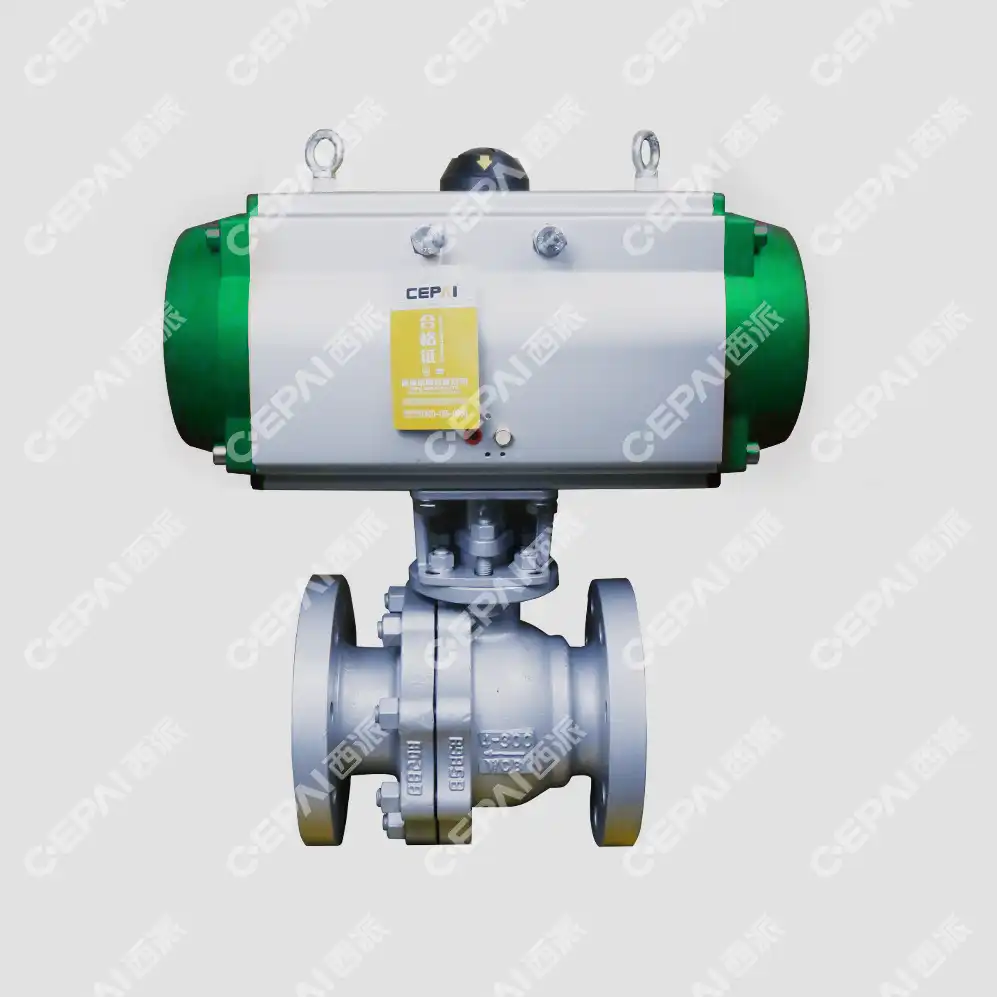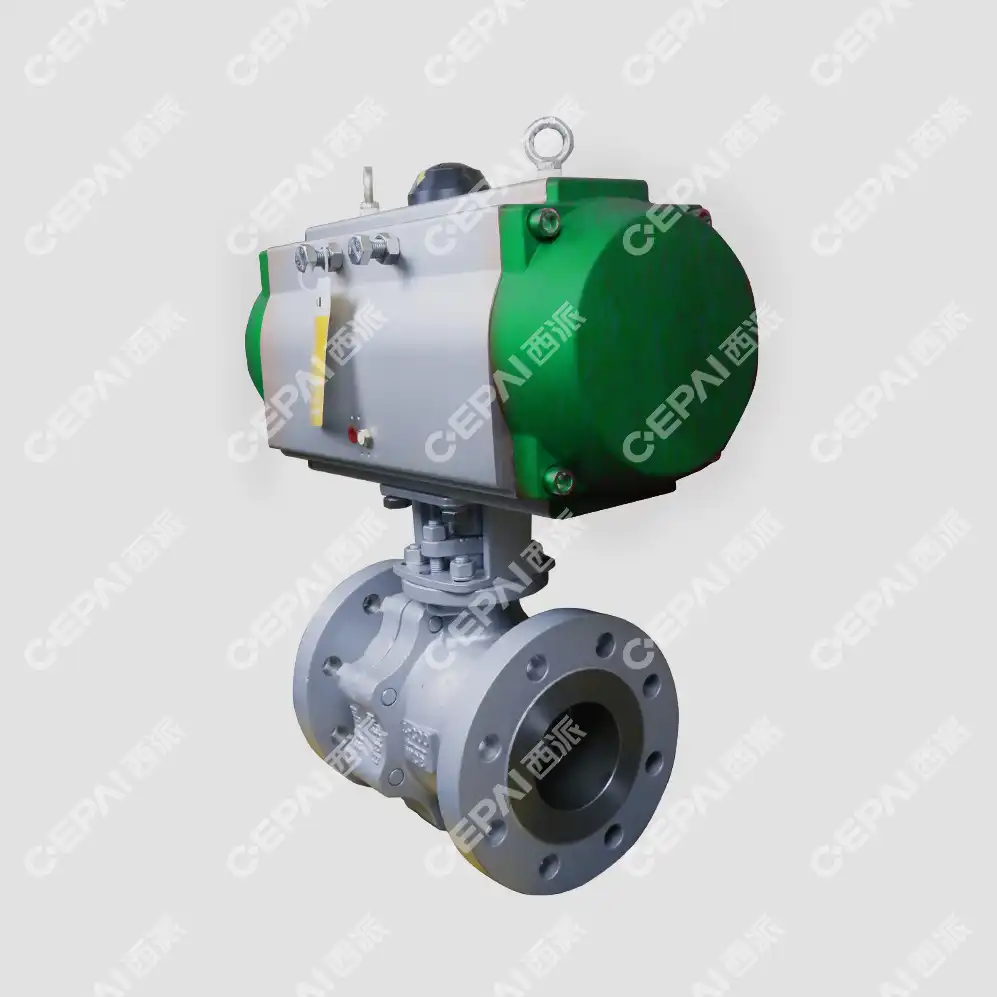All About Ball Valve Parts and How to Choose the Right Specs
Ball valves represent one of the most versatile and widely used flow control devices in modern industrial applications. Understanding the intricate components and specifications of a ball valve is crucial for engineers, procurement specialists, and maintenance professionals who need to ensure optimal performance in their systems. From the fundamental ball and seat assembly to the sophisticated actuator mechanisms, each component plays a vital role in the valve's overall functionality. Choosing the right specifications involves careful consideration of factors including pressure ratings, temperature ranges, material compatibility, and application-specific requirements. This comprehensive guide will explore the essential ball valve parts, their functions, and provide expert insights into selecting the optimal specifications for your industrial needs. Whether you're dealing with petrochemical processes, power generation, or general industrial applications, mastering these fundamentals will enable you to make informed decisions that enhance system reliability and operational efficiency.

Essential Ball Valve Components and Their Functions
Ball and Seat Assembly Configuration
The ball and seat assembly forms the heart of any ball valve system, directly determining the valve's sealing capability and flow characteristics. The ball itself, typically manufactured from stainless steel, carbon steel, or specialized alloys, features a precisely machined spherical surface with a cylindrical bore that aligns with the pipeline when fully open. The ball's surface finish is critical, as it must maintain perfect contact with the seat materials to ensure leak-tight closure. Modern ball valve designs incorporate floating or trunnion-mounted balls, each offering distinct advantages depending on the application requirements. The seat assembly works in conjunction with the ball to create a reliable seal. Seats are commonly manufactured from resilient materials such as PTFE, PEEK, or metal-to-metal configurations for high-temperature applications. The seat design must accommodate thermal expansion, pressure differentials, and potential media contamination while maintaining consistent sealing performance. Advanced ball valve designs feature spring-loaded seats that automatically adjust to compensate for wear and thermal cycling, ensuring long-term reliability in demanding industrial environments.
Stem and Actuator Interface Systems
The stem mechanism serves as the critical link between the external actuator and the internal ball assembly, transmitting rotational motion to control flow. High-quality ball valve stems are typically manufactured from corrosion-resistant materials and feature precise machining to minimize friction and wear. The stem-to-ball connection must be robust enough to handle the required torque while maintaining accurate positioning throughout the valve's operational life. Anti-blowout stem designs incorporate additional safety features to prevent stem ejection under extreme pressure conditions. The actuator interface system encompasses the components that enable automated or manual operation of the ball valve. Manual actuators include lever handles, gear operators, and handwheels, each designed for specific torque requirements and operational frequencies. Automated actuators, including pneumatic, hydraulic, and electric types, require precise interface specifications to ensure proper torque transmission and position feedback. The actuator mounting configuration must accommodate the specific ball valve design while providing adequate access for maintenance and adjustment procedures.
Body and Bonnet Construction Details
The valve body houses all internal components and provides the primary pressure boundary for the system. Ball valve bodies are available in various configurations, including one-piece, two-piece, and three-piece designs, each offering different advantages in terms of maintenance access, pressure capability, and cost considerations. The body material selection is critical and must be compatible with the process media, operating temperature, and pressure requirements. Common body materials include carbon steel, stainless steel, duplex alloys, and exotic materials for specialized applications. The bonnet assembly provides access to internal components while maintaining pressure integrity. Bolted bonnet designs offer superior access for maintenance and repair operations, while welded bonnets provide enhanced pressure capabilities for high-pressure applications. The bonnet-to-body connection must incorporate appropriate gasket or seal configurations to prevent external leakage. Modern ball valve designs often feature integrated bonnet assemblies that streamline installation and reduce potential leak points in the system.
Material Selection and Pressure Rating Considerations
Pressure Class and Temperature Ratings
Selecting the appropriate pressure class for a ball valve application requires careful analysis of system operating conditions, including maximum working pressure, temperature fluctuations, and safety margins. Standard pressure classes such as ANSI 150, 300, 600, 900, 1500, and 2500 provide standardized specifications for flange connections, wall thickness, and testing requirements. The relationship between pressure and temperature must be carefully evaluated, as higher temperatures typically reduce the allowable working pressure for most materials. Ball valve manufacturers provide detailed pressure-temperature charts that define safe operating envelopes for specific material combinations. Temperature considerations extend beyond simple material selection to include thermal expansion effects, gasket compatibility, and actuator performance. High-temperature ball valve applications may require extended bonnet designs to protect actuator components from excessive heat exposure. Conversely, low-temperature applications must address material toughness requirements and potential thermal shock conditions. The ball valve's thermal cycling capability becomes particularly important in applications with frequent temperature variations, as this can lead to premature wear of sealing components.
Corrosion Resistance and Material Compatibility
Material compatibility analysis is essential for ensuring long-term ball valve performance in corrosive environments. The selection process must consider not only the primary process media but also potential contaminants, cleaning agents, and environmental conditions. Stainless steel grades such as 316/316L offer excellent general corrosion resistance, while duplex and super duplex alloys provide enhanced resistance to chloride-induced stress corrosion cracking. For highly corrosive applications, exotic materials such as Hastelloy, Inconel, or titanium may be required. The ball valve's wetted components must be evaluated collectively to ensure uniform corrosion resistance throughout the assembly. Galvanic corrosion can occur when dissimilar metals are in contact with conductive media, potentially leading to accelerated degradation of the less noble material. Proper material selection and coating systems can mitigate these effects while maintaining cost-effectiveness. Regular material compatibility testing and field performance monitoring help validate material selection decisions and identify potential issues before they impact system reliability.
Seal and Gasket Material Selection
Seal and gasket materials play a crucial role in ball valve performance, particularly in applications involving aggressive chemicals, extreme temperatures, or high-pressure conditions. Elastomeric seals such as Buna-N, Viton, and EPDM offer excellent flexibility and sealing performance but have limited temperature ranges and chemical compatibility. PTFE-based seals provide broad chemical compatibility and temperature resistance but may require special consideration for high-pressure applications due to their tendency to cold flow under load. Metal-to-metal sealing systems offer superior temperature and pressure capabilities but require precise machining and surface finish specifications to achieve reliable sealing. These systems are particularly valuable in fire-safe applications where soft seals may be compromised by extreme temperatures. The selection of appropriate seal materials must consider not only the primary sealing function but also the potential for seal degradation due to thermal cycling, pressure fluctuations, and chemical exposure over the valve's operational life.

Application-Specific Selection Criteria and Best Practices
Flow Characteristics and Sizing Requirements
Understanding flow characteristics is fundamental to proper ball valve selection and sizing. Full-port ball valves provide unrestricted flow with minimal pressure drop, making them ideal for applications where flow capacity is critical. Reduced-port designs offer cost advantages while still providing adequate flow capacity for many applications. The relationship between valve size, flow coefficient (Cv), and system pressure drop must be carefully evaluated to ensure optimal performance. Oversized valves may result in poor control characteristics and increased costs, while undersized valves can create excessive pressure drops and potential cavitation issues. Cavitation and flashing phenomena must be considered in ball valve applications involving high pressure drops or volatile liquids. These conditions can cause significant damage to valve components and reduce operational life. Proper sizing calculations should include evaluation of the pressure recovery factor and liquid pressure vapor pressure relationships. Anti-cavitation trim designs and specialized ball geometries can help mitigate these effects in susceptible applications, ensuring reliable long-term performance.
Installation and Maintenance Considerations
Proper installation practices are essential for achieving optimal ball valve performance and longevity. The installation process must consider piping stress effects, thermal expansion accommodation, and access requirements for maintenance operations. Ball valves should be installed with appropriate support to prevent piping loads from affecting valve operation. The orientation of the valve may impact drainage capabilities and actuator accessibility, particularly in outdoor installations where weather protection is required. Maintenance requirements vary significantly based on ball valve design and application conditions. Three-piece body designs offer superior maintenance access, allowing for in-line component replacement without complete valve removal. Preventive maintenance programs should include regular inspection of sealing components, actuator calibration, and lubrication system maintenance. The availability of spare parts and local service support should be considered during the selection process to ensure long-term operational reliability and minimize downtime costs.
Quality Standards and Certification Requirements
Compliance with industry standards and certification requirements is crucial for ensuring ball valve reliability and regulatory compliance. API 6D, API 6A, and API 608 standards provide comprehensive requirements for ball valve design, manufacturing, and testing in petroleum and natural gas applications. These standards address critical aspects including pressure testing, material specifications, and quality assurance procedures. Ball valve manufacturers must demonstrate compliance through rigorous testing and documentation processes, including pressure tests, fugitive emission testing, and fire-safe certification. Quality management systems such as ISO 9001 provide the framework for consistent manufacturing processes and continuous improvement. Third-party certification bodies verify compliance with applicable standards and provide independent validation of product quality. The selection of certified ball valve suppliers helps ensure product reliability and provides confidence in the manufacturer's quality management systems. Regular audits and performance monitoring help maintain compliance and identify opportunities for improvement in product quality and reliability.
Conclusion
Selecting the right ball valve specifications requires a comprehensive understanding of component functions, material properties, and application-specific requirements. The intricate relationship between ball and seat assemblies, stem mechanisms, and body construction directly impacts valve performance and reliability. By carefully considering pressure ratings, temperature limitations, material compatibility, and flow characteristics, engineers can make informed decisions that optimize system performance while ensuring long-term operational reliability. The investment in proper specification and quality components ultimately pays dividends through reduced maintenance costs, improved system efficiency, and enhanced safety performance.
Ready to upgrade your industrial valve systems with precision-engineered ball valves? At CEPAI Group, we combine decades of expertise with cutting-edge manufacturing technology to deliver ball valve solutions that exceed industry standards. Our comprehensive range of ball valves, backed by rigorous quality control and extensive certifications, ensures optimal performance in your most demanding applications. Whether you need standard configurations or custom-engineered solutions, our technical team is ready to provide expert consultation and support throughout your project lifecycle. Don't let substandard valves compromise your operational efficiency – contact our valve specialists today at cepai@cepai.com to discuss your specific requirements and discover how CEPAI's advanced ball valve technology can enhance your system performance and reliability.
References
1. Smith, J. R., & Johnson, M. A. (2019). Advanced Ball Valve Design Principles for Industrial Applications. Journal of Valve Technology, 45(3), 78-92.
2. Thompson, K. L., Williams, R. D., & Brown, S. E. (2020). Material Selection and Corrosion Resistance in Ball Valve Applications. Industrial Flow Control Quarterly, 38(2), 134-148.
3. Davis, P. H., & Anderson, C. M. (2021). Pressure Rating Considerations and Safety Factors in Ball Valve Specification. Mechanical Engineering Review, 67(4), 45-61.
4. Miller, L. K., Garcia, A. F., & Wilson, T. J. (2018). Flow Characteristics and Sizing Methodologies for Ball Valve Applications. Process Engineering International, 29(7), 112-127.
_1746598568348.webp)
Get professional pre-sales technical consultation and valve selection services, customized solution services.

About CEPAI


